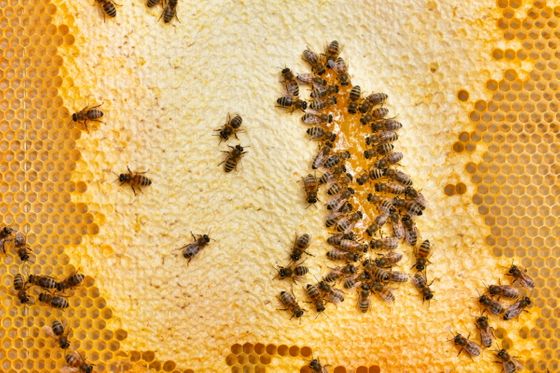What is the significance of 'experiments in which honeybees are bred in artificial facilities where light and temperature are controlled'?

Neri Oxman's Synthetic Apiary II studies honey bees to gather design insights
https://www.dezeen.com/2021/11/19/neri-oxman-synthetic-apiary-two-honey-bees/
Oxman points out that one million species of organisms are endangered on Earth, and the significant decline in honeybees around the world is the most disturbing. Bees are insects that are deeply involved in human culture, and not only are honey eaten in various parts of the world, but more than 70% of the major crops are pollinated via honeybees. matter.
Launched in 2016 by the Mediated Matter group research team, 'Synthetic Apiary I' is a project to create a managed space for bees to work all year round. Artificially controlled light, humidity and temperature always reproduce the spring conditions, and bees are given synthetic pollen and sugar water to feed on. You can see what kind of facility Synthetic Apiary I is by watching the following movie.
Neri Oxman designs synthetic apiary --YouTube
In the white inorganic room, the temperature is kept at 21 degrees Celsius and the relative humidity is kept at 50%, which reproduces the environment suitable for the survival of honeybees.

Bees are fed with synthetic pollen and sugar water, and can survive and reproduce even in a flower-free environment.

Researchers wear protective clothing and enter the room to take care of bees, assess their health, and collect samples.

By breeding under artificially controlled conditions, it is possible to study the behavioral dynamics of honeybees longitudinally on various scales.

The queen bee bred in Synthetic Apiary I has already succeeded in adapting the biological cycle to the surrounding environment and inducing spawning. Oxman argues that this demonstrates the ability to artificially shift the entire bee behavior cycle, suggesting that sustainable bee breeding is possible in an artificial environment. ..

Following Synthetic Apiary I, the research team is building a facility, Synthetic Apiary II , to study the ability of bee colonies to nest. Synthetic Apiary II can study 'how honeybee colonies respond to changes in the surrounding environment' by changing the surrounding environment in various ways. Synthetic Apiary II has various environments, such as an environment in which chemical pheromones are embedded by 3D printer technology, an environment in which the strength and direction of the magnetic field are changed in various ways, and an environment in which the shape changes over time. Is included.
In an environment where beeswax was prepared with increased strength with synthetic biomarkers, bees began to incorporate the prepared beeswax as a building material for their nests instead of using a lot of energy to generate it themselves. matter. 'This suggests that nest building is not just a pre-defined set of behaviors to form a particular morphology, but a responsive and dynamic process that involves complex adaptations to perturbations from environmental stimuli. 'We do,' said Oxman.
In other words, the surrounding environment becomes a kind of input information, the bee colony adapts its behavior, and the output information called the honeycomb changes. The research team will analyze the structure of nests made with Synthetic Apiary II through X-ray CT scans to study the invisible interaction between bees and the surrounding environment. By analyzing the formation of bee nests and group behavior, it may be possible to discover new insights that can be adapted to human behavior, new biocompatible materials, and efficient structural shapes.
'In this way, we transform the building environment into a more synergistic form that integrates more seamlessly with the natural environment through materials and shapes, providing a beneficial habitat for both humans and other organisms. 'By practicing industrial processes and human-centered design, we not only protect pollutants who have changed their essential behaviors and ecosystems, but also prosper again without human intervention.' Being able to do so is essential to our mutual survival, 'said Oxman.

Related Posts:







